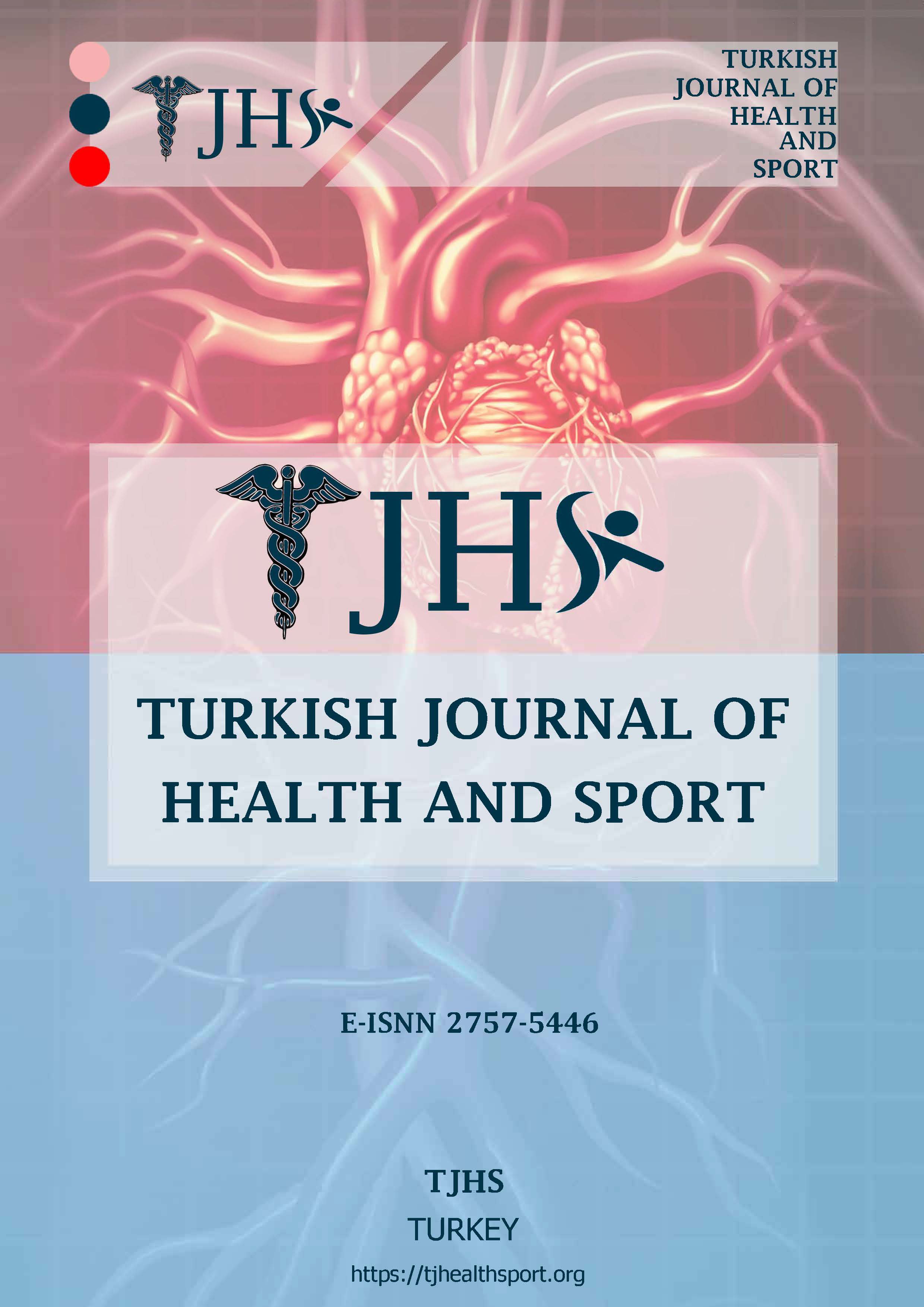Author :
Abstract
Pandeminin Fiziksel Aktivite ve Dismenoreye Etkisinin Birlikte İncelenmesi
Giriş: Dismenore, vücut kütle indeksinin (VKİ) 20 kg/cm2'den az olması, sigara kullanımı, erken menarş, daha uzun süren menstruasyon, düzensiz siklus ve ailede dismenore öyküsü ile ilişkilidir. Öte yandan fiziksel aktivite düzeyi ile dismenore arasındaki ilişki halen tartışmalıdır.
Amaç: Bu çalışmada pandeminin fiziksel aktivite ve dismenoreye etkisinin birlikte incelenmesi amaçlanmıştır.
Bulgular: Bireylerin dismenore şiddeti, menstrual semptomları, fiziksel aktivite düzeyleri sırasıyla “Vizuel Analog Skala (VAS)”, “Menstruasyon Semptom Ölçeği (MSÖ)”, “Uluslararası Fiziksel Aktivite Anketi (UFAA)” ile değerlendirildi. Ayrıca katılımcıların VKİ değerleri hesaplandı. Pandemi öncesinde ve döneminde olmak üzere iki kez değerlendirme yapıldı. Pandemi öncesi VAS değeri 6,23 ± 1,78 iken pandemide 7,20 ± 1,63 idi. Pandemi öncesi UFAA skoru 1274,67 ± 1232,26 iken pandemide 902,74 ± 892,33 idi. Pandemi öncesi ve pandemideki VAS (t: -3,549, p: 0,001) ve UFAA (t: 2,543, p: 0,013) değerlerindeki değişim istatistiksel olarak anlamlı iken MSÖ (t: -.781, p: 0,437) ve VKİ (t: -,938, p: 0,351) değerlerindeki değişim istatistiksel olarak anlamlı bulunmadı.
Sonuç: Pandemi öncesi ile pandemi sırasındaki dismenore şiddeti ve fiziksel aktivite düzeyleri karşılaştırıldığında, pandemi sırasında fiziksel aktivite düzeyinde azalma ve dismenore şiddetindeki artış istatistiksel olarak anlamlı bulundu (p<0.05). VKİ ve menstrüel semptomlarda artış olmasına rağmen bu artış istatistiksel olarak anlamlı değildi (p> 0.05).
Keywords
Abstract
Examination of the Effect of the Pandemic on Physical Activity and Dysmenorrhea
Abstract
Background: Dysmenorrhoea releated with body mass index -less than 20 kg/cm2, smoking, early menarche, longer menstrual cycles, irregular menstrual flow and a family history of dysmenorrhea. On the other hand, the relationship between physical activity level and dysmenorrhea is still controversial.
Purpose of the study: This study aimed to examinate of the effect of the pandemic on physical activity and dysmenorrhea together.
Results: Individuals' severity of dysmenorrhea, menstrual symptoms, physical activity levels were assessed with “Visual Analogue Scale (VAS)’’, “Menstruation Symptom Questionarre (MSQ)”, “International Physical Activity Questionnaire (IPAQ)”, respectively. Moreover; BMI was calculated. Assessments were carried out twice, before -during the pandemic. The VAS value was 6.23 ± 1.78 before the pandemic, it was 7.20 ± 1.63 during the pandemic. The IPAQ score was 1274.67 ± 1232.26 before the pandemic, it was 902.74 ± 892.33 during the pandemic. While the changes in VAS (t: -3.549, p: 0.001) and IPAQ (t: 2.543, p: 0.013) values before and during the pandemic were statistically significant MSQ (t: -.781, p: 0.437) and BMI (t: -.938, p: 0.351) changes were not statistically significant.
Conclusion: When the severity of dysmenorrhea and physical activity levels were compared with before the pandemic, a decrease in the level of physical activity and an increase in the severity of dysmenorrhea were found statistically significant during the pandemic (p<0.05). Although there was an increase in BMI and menstrual symptoms this increase wasn’t statistically significant (p> 0.05).





